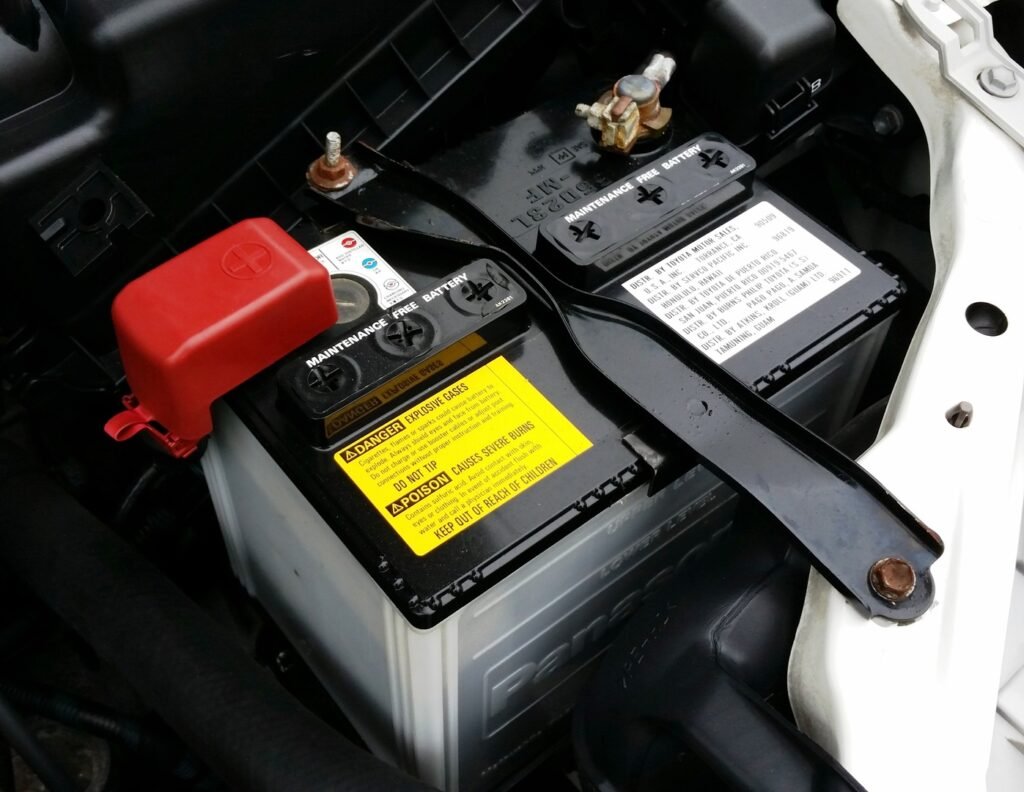How to Keep Your Car Battery in Good Condition During Cold Weather
Importance of Car Batteries
Car batteries are a crucial component of modern vehicles, responsible for starting the engine and powering various electrical systems. Without a properly functioning battery, your car simply won’t start, leaving you stranded.
Challenges of Cold Weather
Cold weather poses unique challenges to car batteries. As temperatures drop, the chemical reactions within the battery slow down, reducing its ability to hold and deliver charge.
This can lead to a range of problems, from slow engine cranking to complete battery failure.
Understanding Car Batteries
Types of Car Batteries
There are several types of car batteries available, each with its own set of characteristics:
- Lead-Acid Batteries: The most common type, available in both flooded (wet) and sealed (maintenance-free) versions.
- AGM (Absorbent Glass Mat) Batteries: A type of sealed lead-acid battery known for its high performance and durability.
- Lithium-Ion Batteries: Increasingly popular in electric and hybrid vehicles, offering higher energy density and longer lifespan.
How Car Batteries Work
Car batteries work by converting chemical energy into electrical energy. This is achieved through a series of chemical reactions involving lead plates and sulfuric acid. When you start your car, the battery delivers a burst of electricity to the starter motor, which then cranks the engine.
Effects of Cold Weather on Car Batteries
Chemistry of Cold Weather Battery Drain
Cold temperatures slow down the chemical reactions inside the battery, reducing its efficiency. This means the battery can’t provide the same amount of power as it would in warmer conditions. Additionally, cold weather increases the viscosity of engine oil, making it harder for the engine to turn over, which puts extra strain on the battery.
Common Cold Weather Issues
- Reduced Capacity: A car battery can lose up to 60% of its capacity in freezing temperatures.
- Increased Internal Resistance: Cold weather increases the battery’s internal resistance, making it harder for it to deliver power.
- Sulfation: In lead-acid batteries, cold temperatures can lead to the buildup of lead sulfate crystals, which can reduce battery life.
Preparing Your Car Battery for Winter
Inspection and Testing
Before winter sets in, it’s important to inspect and test your car battery:
- Visual Inspection: Check for any signs of corrosion, cracks, or leaks.
- Voltage Test: Use a voltmeter to measure the battery’s voltage. A fully charged battery should read around 12.6 volts.
- Load Test: A professional load test can simulate the demands of starting an engine in cold weather, providing a more accurate assessment of the battery’s health.
Cleaning and Maintenance
Keeping your battery clean and well-maintained can help it perform better in cold weather:
- Clean Terminals: Remove any corrosion from the battery terminals using a mixture of baking soda and water.
- Check Fluid Levels: For flooded lead-acid batteries, check the electrolyte levels and top up with distilled water if necessary.
- Tighten Connections: Ensure that all connections are tight and secure to prevent power loss.
Best Practices for Maintaining Car Batteries in Cold Weather
Regular Use and Proper Warm-Up
Regularly using your car helps keep the battery charged. If you don’t drive often, consider using a battery maintainer to keep it topped up. Allowing your car to warm up before driving can also help reduce the strain on the battery.
Storage Tips for Vehicles Not in Use
If you’re storing your vehicle for an extended period, take the following precautions to protect the battery:
- Disconnect the Battery: Disconnecting the negative terminal can help prevent the battery from draining.
- Use a Battery Tender: A battery tender or maintainer can keep the battery charged without overcharging it.
- Store in a Warm Place: If possible, store the vehicle in a garage or other sheltered area to protect the battery from extreme cold.
Battery Insulation
Insulating your battery can help protect it from the cold. Battery blankets or thermal wraps are available and can provide an extra layer of insulation, helping to keep the battery warm and maintain its efficiency.
Choosing the Right Battery for Cold Weather
Battery Ratings and Specifications
When selecting a battery for cold weather, consider the following ratings and specifications:
- Cold Cranking Amps (CCA): This rating indicates the battery’s ability to start an engine in cold temperatures. Higher CCA ratings are better for cold weather.
- Reserve Capacity (RC): This measures how long the battery can power the vehicle’s electrical systems if the alternator fails. A higher RC can be beneficial in cold weather.
Recommended Battery Brands
Some brands are known for their high-quality batteries that perform well in cold weather. These include:
- Optima Batteries: Known for their durability and high CCA ratings.
- Odyssey Batteries: Offer high performance and long lifespan.
- DieHard Batteries: A trusted brand with a range of options suitable for cold weather.
Troubleshooting and Solutions
Jump-Starting Your Car
If your battery fails in cold weather, jump-starting can get you back on the road:
- Ensure Safety: Make sure both cars are turned off and in park.
- Connect Jumper Cables: Attach the positive (red) cable to the positive terminal of the dead battery, then the positive terminal of the good battery. Attach the negative (black) cable to the negative terminal of the good battery, then to an unpainted metal surface on the dead car.
- Start the Car: Start the working car, then try to start the dead car.
- Remove Cables: Remove the jumper cables in reverse order.
When to Replace Your Battery
If your battery frequently fails or shows signs of damage, it may be time to replace it. Look for signs like:
- Slow Engine Crank: The engine turns over slowly when starting.
- Check Engine Light: The battery warning light on your dashboard is on.
- Swollen Battery Case: A sign of internal damage.
- Frequent Jump-Starts: Needing frequent jump-starts indicates a weak battery.
Keeping your car battery in good condition during cold weather requires proper preparation, maintenance, and care. Regular inspections, cleaning, and using the right battery for your climate are essential steps.
Final Tips for Battery Care
- Monitor Battery Health: Regularly check your battery’s health, especially before the onset of cold weather.
- Drive Regularly: Keep your battery charged by driving your car regularly or using a battery maintainer.
- Insulate the Battery: Use insulation to protect your battery from extreme cold.
- Choose the Right Battery: Select a battery with high CCA ratings for optimal performance in cold weather.


